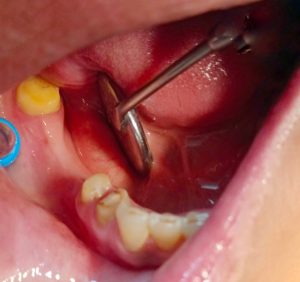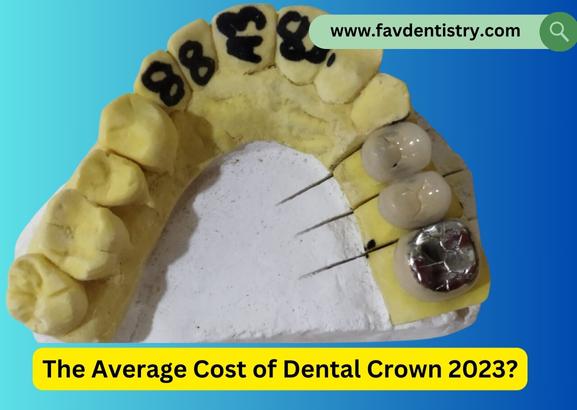Last Updated on 3 weeks by DR. ALBIN SIPES
Dental bridges are an effective way to replace missing teeth and restore your smile. They are a popular option because they are relatively easy to install, and they provide a long-lasting solution. However, many people are curious about how long a dental bridge lasts before it needs to be replaced. In this blog post, we’ll explore this topic in detail and provide you with everything you need to know about the lifespan of dental bridges.
What is a dental bridge?
A dental bridge is a type of dental prosthesis that is used to replace missing teeth. It consists of one or more artificial teeth, called pontics, which are anchored in place by dental crowns that are attached to the adjacent teeth. The crowns act as anchors for the bridge, holding it firmly in place and ensuring that the pontics don’t shift or move.
How long do dental bridges last?
The lifespan of a dental bridge can vary widely depending on a number of factors, including the type of bridge, the materials used, and how well the bridge is cared for. In general, however, most dental bridges last between 5 and 15 years.

There are several types of dental bridges, and each has its own lifespan:
Traditional bridges: Traditional bridges are the most common type of dental bridge, and they typically last between 5 and 15 years. They consist of pontics that are anchored in place by dental crowns that are cemented onto the adjacent teeth.
Cantilever bridges: Cantilever bridges are similar to traditional bridges, but they only require one dental crown to anchor the pontic in place. They are often used when there is only one adjacent tooth available to anchor the bridge. Cantilever bridges typically last between 5 and 10 years.
Maryland bridges: Maryland bridges are a conservative option that involves bonding the pontic to the adjacent teeth using a metal or porcelain framework. They are a popular choice for replacing missing front teeth and can last between 5 and 10 years.
Implant-supported bridges: Implant-supported bridges are the most durable option and can last 20 years or more with proper care. They consist of pontics that are anchored in place by dental implants, which are surgically implanted into the jawbone.

Factors that affect the lifespan of dental bridges
Several factors can affect how long a dental bridge lasts, including:
- Oral hygiene: Good oral hygiene is essential for maintaining the health and longevity of dental bridges. Regular brushing and flossing can help prevent gum disease and decay, which can weaken the teeth and cause the bridge to fail.
- Bite force: The amount of force applied to the bridge when biting and chewing can affect its lifespan. Patients who grind or clench their teeth may need to wear a nightguard to protect the bridge from excessive wear and tear.
- Material quality: The materials used to make the bridge can also affect its lifespan. High-quality materials, such as porcelain or zirconia, are more durable and resistant to chipping and cracking.
- Regular dental check-ups: Regular dental check-ups are essential for maintaining the health of the teeth and gums and can help detect any issues with the bridge before they become serious.
- The patient’s overall health: A patient’s overall health can also affect the lifespan of the bridge. Conditions such as diabetes or autoimmune disorders can increase the risk of infection and other complications, which can impact the longevity of the bridge.
How to care for dental bridges
To ensure the longevity of your dental bridge, it’s important to follow these care tips:
- Brush and floss regularly: Brush your teeth twice a day and floss at least once a day to prevent gum disease and decay.
- Avoid hard or sticky foods: Hard or sticky foods can damage the bridge or cause it to come loose.
The Materials Used in Dental Bridges
One of the most important factors in determining how long a dental bridge will last is the materials used to make it. There are several different materials that can be used to make dental bridges, including porcelain, ceramic, zirconia, and metal alloys.
Porcelain and ceramic bridges are the most commonly used materials for dental bridges because they provide a natural-looking appearance and are resistant to staining. However, they can be more fragile than other materials and may require more care and maintenance.
Zirconia bridges are a newer option that is becoming more popular due to their strength and durability. Zirconia bridges are made from a type of ceramic that is reinforced with a strong metal frame. They are resistant to cracking and chipping and can last longer than other types of dental bridges.
Metal alloy bridges are also an option, but they are less commonly used due to their noticeable appearance. However, they are incredibly durable and can last for decades with proper care and maintenance.
The Quality of the Dental Work
The quality of dental work is another important factor in determining how long a dental bridge will last. A bridge that is properly fitted, bonded, and adjusted will last longer than a bridge that is poorly made or poorly fitted.
It is important to choose a qualified and experienced dentist or prosthodontist who has experience with dental bridges to ensure that the bridge is properly made and fitted.
They will also be able to provide guidance on how to properly care for the bridge and prevent damage or wear and tear over time.
Oral Hygiene Habits
Proper oral hygiene habits are essential for maintaining the lifespan of a dental bridge. Brushing twice a day, flossing daily, and using an antiseptic mouthwash can help to prevent plaque buildup and gum disease, which can lead to the deterioration of the natural teeth or dental implants that anchor the bridge in place.
Patients should also be careful when eating hard or sticky foods, as they can damage the bridge or cause it to become loose. Regular dental checkups and cleanings are also important to monitor the health of the bridge and surrounding teeth and gums.
Wear and Tear
Over time, dental bridges may experience wear and tear due to normal use and everyday activities such as eating and speaking. While proper care and maintenance can help to extend the lifespan of a dental bridge, eventually, it may need to be replaced.
The lifespan of a dental bridge can also be affected by external factors such as trauma or injury to the mouth, changes in the structure of the surrounding teeth or gums, or changes in the patient’s overall health.
What Are the Signs That My Dental Bridge Needs to Be Replaced?
If your dental bridge is not properly cared for, it may need to be replaced sooner than expected. Some signs that your bridge needs to be replaced include pain or discomfort when chewing, visible cracks or chips in the bridge, and loose or shifting teeth. If you notice any of these signs, it is important to visit your dentist as soon as possible.
What Are the Benefits of a Dental Bridge?
In addition to replacing missing teeth and restoring the functionality of the mouth, there are several other benefits of a dental bridge. A bridge can help to improve your appearance by filling in gaps between teeth and giving you a more even smile.
It can also help to prevent further damage to your teeth by providing additional support and stability. Finally, a bridge can help to improve your overall oral health by preventing bacteria from entering the gaps between teeth and causing decay.
What Are the Risks of a Dental Bridge?
Although a dental bridge can provide many benefits, there are also some risks associated with it. The most common risk is that the bridge may not fit properly, which can lead to pain or discomfort when chewing. In addition, there is also a risk of infection if bacteria enter the gap between the bridge and the gums. Finally, there is also a risk of damage to the surrounding teeth if the bridge is not properly cared for.
Conclusion
In conclusion, a dental bridge can be a great solution for replacing missing teeth and restoring the functionality of the mouth. However, it is important to understand how long a dental bridge lasts and what factors affect its longevity. With proper care and maintenance, a dental bridge can last for up to 15 years or more. By following good oral hygiene habits and visiting your dentist regularly, you can ensure that your dental bridge lasts as long as possible.




